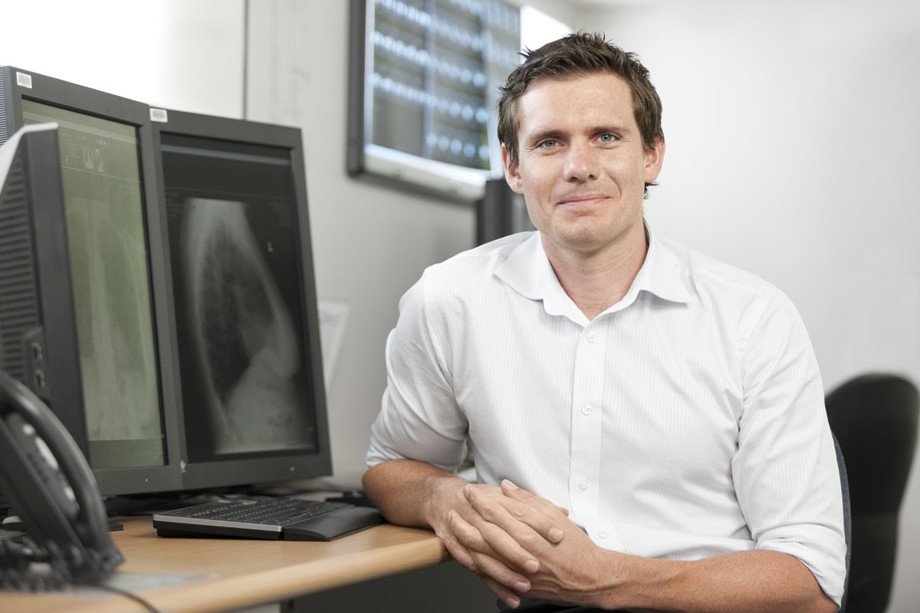On November 8th the Radiology community celebrates the eighth global International Day of Radiology (IDOR 2019). November 8th marks a poignant moment in radiology history; the day that Wilhelm Conrad Röntgen discovered the existence of X-Rays in 1895.
The theme for 2019’s IDOR is Sports Imaging. Sports Imaging is a sub-speciality within Radiology which focuses on the parts of the body commonly injured by athletes or people partaking in sporting activities. Within Radiology we use the term Musculoskeletal (MSK). This covers all areas of the body which contain bones, joints and soft tissues.
We meet some of our Radiologists and find out why this sub-specialty of continues to peak their interest.
Dr Morgan McMeniman MBBS, BSc, FRANZCR
Dr McMeniman graduated with first class honours from the University of Queensland Medical School in 2005, where he also earned the John Weinholt memorial prize for medicine. He completed his radiology training in 2012 and spent 6 months focusing on neuroimaging at the Royal Brisbane Hospital. He then commenced a year of subspecialised training in musculoskeletal imaging and intervention at St Paul’s Hospital in Vancouver, Canada before joining Queensland X-Ray in 2013.
Firstly; why did you choose to embark on a career in Radiology?
I chose Radiology as a medical specialty for quite a few reasons. It is extremely broad and varied but not shallow, we have sub-specialties in every field and while you might be an expert in your field, you are learning every day from other sub-specialists. It offers a continually interesting and challenging workplace while also working in a team environment, not just with your Radiologist colleagues but also all of the medical imaging professionals in an imaging department. There are constant interactions with other Doctors and medical professionals as medical imaging is integral to almost all parts of modern medicine. As one of the front lines of medical technology development, imaging changes every year and there are always new developments and research keeping all of us on our toes.
When/why did you take a particular interest in Musculoskeletal Imaging?
When people think of musculoskeletal imaging they think of professional athletes, but that is only a small part of what MSK imaging is. As a keen (but not gifted) amateur athlete I think we are drawn to try to assist those achieve goals we see as amazing such as Olympic competition. As a professional, gradually interest in the imaging and specialised procedures become the main focus and drive for all of those with musculoskeletal complaints.
Based on your experience, what sports and sports injuries are most commonly presented to Radiologists?
Based on my experience men over the age of 30 should never play mixed netball. From what our images tell me, it’s a war-zone out there!
Just for fun: what is the most interesting sports injury/MSK injury you have been presented with?
Being involved with a winter Olympian who was preparing for Sochi 2014. She has significant shoulder pathology and as an adaptive skiing athlete in the Special Olympics managing her shoulder injuries was a massive challenge requiring creative solutions and treatment not just for competition but for daily life. Being involved in her care was very interesting and required real lateral thinking. It was a great experience and very satisfying.

